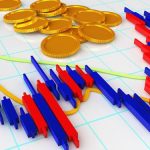Economists use scientific observation and deduction in their investigations. To achieve this they:
Describe and measure the exchanges they observe
Economists describe changes in economic variables, and measure these changes over time. For example, economists describe and measure how interaction in markets determines the prices of such diverse products as motor cars, houses, haircuts, and computer software. Measurement in economics can take many forms, including measuring absolute and relative quantities and values. When measuring relative values it is common to use index numbers.
Explain how interactions arise and create costs and benefits
Economists try to explain the effects, or results, of economic transactions. For example, economists can explain why, despite bubbles and crashes, the long-run trend in house prices in the UK has been upwards over the last 30 years, and can identify those who have been affected positively and negatively by this increase. Of course, economists also try to explain the short-term movements in prices, and how they also have costs and benefits.
Propose hypotheses, construct, and apply ‘models’ to test these hypotheses.
Like all scientists, economists develop hypotheses to explain why economic behaviour takes place, and then construct models to test these hypotheses. For example, economists may propose that price rises are caused by excess demand, and then attempt to construct a model of price that explains how excess demand can raise price. Economists frequently use versions of the demand and supply model to help explain events such as house price trends and movements. Economic models usually employ graphical and mathematical analysis to help explain and illustrate such economic processes.
Gather data to put into the model
Models must be tested against the real world, which means gathering statistical data about real events. In this way, a model can be improved and revised when necessary.
Predict behaviour based on these models.
The ultimate goal of the economist is to predict future behaviour. For example, by using a demand and supply model and by inputting real data about the housing market, economists can show that even a small fall in bank lending can trigger behaviour that leads to a significant fall in house prices in the short run. The ultimate value of an economic model is that it can accurately predict the onset and the effect of an economic event. The better the model is, the more useful it is in helping economists make predictions.
Economists assume that economic events and phenomena do not occur at random, but are determined by underlying and understandable causes. Unlike the pure scientist, economists cannot undertake controlled experiments, so they must test their models in different ways. Statistical analysis of actual economic data can provide a flow of information from which to build models and test hypotheses. For example, by gathering data about changes in house prices it is possible to deduce factors that cause house prices to go up or down, and by how much. Economists use index numbers to help make comparisons between countries and over time.
Correlation analysis can help determine the strength of particular causal relationships so that strong and weak relationships can be identified. For example, it might be possible to demonstrate that, of all the factors that have contributed to falling house prices, the reduced availability of credit is the single biggest factor.

